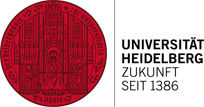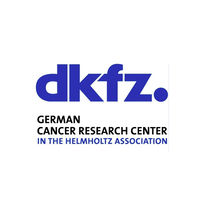预约演示
更新于:2026-01-03
Gallium-68 PSMA-617
更新于:2026-01-03
概要
基本信息
非在研机构 |
权益机构- |
最高研发阶段临床阶段不明 |
首次获批日期- |
最高研发阶段(中国)无进展 |
特殊审评- |
登录后查看时间轴
结构/序列
分子式C49H66GaN9O16 |
InChIKeyPAXMZYRHVDZFFV-VSVMWJISSA-I |
CAS号2247839-19-4 |
使用我们的ADC技术数据为新药研发加速。
登录
或

关联
5
项与 Gallium-68 PSMA-617 相关的临床试验NCT05228106
Pragmatic Study on the Use of 68Ga-PSMA-617 PET/CT Imaging as a Standard of Care to Influence Clinical Management of Tumors Overexpressing PSMA.
This project aims to monitor the innocuity/safety profile of cyclotron-produced [68Ga]-PSMA-617 PET imaging in PSMA-expressing cancers. It is a single-site, pragmatic, non-randomized and open-label study, with no control group. Although prostate cancers constitute the usual recommended population for this PET modality, recent evidences suggest that most solid tumors express substantial amount of PSMA in their neovasculature. As such, all cancers (excluding non-solid cancers) will be eligible for [68Ga]-PSMA-617 PET imaging in this trial, for as long as their tumors express PSMA.
This study also aims to instigate the use of [68Ga]-PSMA-617 in the routine standard-of-care for detection and follow-up of eligible cancers. FInally, this project seeks to gather information about the impact on patient management this novel PET modality will have over the current standard-of-care.
This study also aims to instigate the use of [68Ga]-PSMA-617 in the routine standard-of-care for detection and follow-up of eligible cancers. FInally, this project seeks to gather information about the impact on patient management this novel PET modality will have over the current standard-of-care.
开始日期2022-01-21 |
NCT05841992
Comparison of the Detection Efficiencies of Al18F-PSMA-617 and 68Ga-PSMA-617 PET/CT in Patients With Prostate Cancer
18F-labeled prostate-specific membrane antigen (PSMA) ligand-positron emission tomography (PET) offers advantages over 68Ga-labeled PSMA ligands. Al18F-PSMA-617 is a novel 18F-PSMA compound used for prostate cancer (PCa) imaging. This pilot study was prospectively designed to compare the lesion detectability of Al18F-PSMA-617 and related 68Ga-PSMA-617 PET/CT in patients with PCa
开始日期2021-07-01 |
申办/合作机构 |
NCT04796467
A Pilot Prospective Comparison of 68Ga-P16-093 and 68Ga-PSMA-617 in the Same Group of Prostate Cancer Patients
Prostate-specific membrane antigen (PSMA)-targeted PET imaging with 68Ga-labeled compounds is able to provide superior sensitivity and specificity to detect primary prostate tumor and its metastases, like the widely studied 68Ga-PSMA-617. This pilot study was prospectively designed to evaluate the early dynamic distribution of 68Ga-P16-093, a novel radiopharmaceutical targeting PSMA, which was compared with 68Ga-PSMA-617 in the same group of prostate cancer patients.
开始日期2020-10-01 |
申办/合作机构 |
100 项与 Gallium-68 PSMA-617 相关的临床结果
登录后查看更多信息
100 项与 Gallium-68 PSMA-617 相关的转化医学
登录后查看更多信息
100 项与 Gallium-68 PSMA-617 相关的专利(医药)
登录后查看更多信息
22
项与 Gallium-68 PSMA-617 相关的文献(医药)2025-12-01·Journal of Nuclear Medicine Technology
Challenges and Opportunities in Radioligand Therapy
Review
作者: Currie, Geoffrey M ; Bailey, Dale L
Radioligand therapy (RLT) is a recent term for long established nuclear medicine practices. Although radioiodine provides the historical foundations of theranostics, the prototype RLTs include 68Ga-DOTATATE and 177Lu-DOTATATE, which target somatostatin receptor subtype 2 in neuroendocrine tumors, and 68Ga-PSMA-617 and 177Lu-PSMA-617, which target prostate cancer. There are several challenges and opportunities in the realization of precision medicine through RLT. RLT, weaponized in cancer management through advances in instrumentation and radiochemistry, is transforming the nuclear oncology landscape. Equitable access to these advanced tools remains a global consideration.
2025-09-25·JOURNAL OF MEDICINAL CHEMISTRY
A Novel Type of PSMA-Targeting Ligands via β-Branched Aromatic α-Amino Acid Modification, Bearing Enhanced Tumor Targeting and Reduced Renal Toxicity
Article
作者: Wang, Rui ; Hu, Kuan ; Zhang, Siqi ; Chen, Xueyao ; Gao, Xin ; Yang, Li-Cheng ; Xing, Chunxiao ; Liu, Zong-Xiao
We designed and synthesized a novel type of PSMA radioligand incorporating (2S, 3R) β-branched aromatic α-amino acids within the linker segment of its structure. In vivo PET/CT imaging and biodistribution analysis revealed that β-branched aromatic α-amino acids modified PSMA radioligands could maintain or even improve tumor targeting while exhibiting a more rapid renal clearance rate than [68Ga]Ga-PSMA-617. With average renal uptake of less than 10%ID/g, as opposed to 25%ID/g for [68Ga]Ga-PSMA-617, this substantial decrease in renal accumulation translates to a significantly improved safety profile by minimizing nephrotoxic risks. Our findings establish (2S,3R) β-branched aromatic α-amino acids as multifunctional pharmacophores that simultaneously enhance two critical performance parameters: target-binding affinity and renal clearance efficiency. Notably, [68Ga]Ga-PSMA-Y55 emerged as the lead compound, exhibiting an optimal balance of high tumor uptake and low renal accumulation, rendering it a promising candidate for next-generation prostate cancer radioligand therapy.
2025-06-17·PROCEEDINGS OF THE NATIONAL ACADEMY OF SCIENCES OF THE UNITED STATES OF AMERICA
Development of an in situ CAR-T cell protocol through optical and PSMA-targeted PET imaging
Article
作者: Wang, James ; Engudar, Gokce ; Guo, Yutong ; Jan, Basit L. ; Minn, Il ; Seo, Jai Woong ; Tumbale, Spencer K. ; Czerwinski, Debra K. ; Ferrara, Katherine W. ; Kim, Ha Rin ; Pomper, Martin G. ; Robinson, Elise ; Sallets, Adrienne ; Raie, Marina N. ; Levy, Ronald ; Zhang, Nisi ; Rivera-Rodriguez, Angelie
In situ T cell transfection methods overcome the complexity and high costs associated with conventional chimeric antigen receptor (CAR)-T therapy. However, the in situ CAR-T cell approach operates within the patient’s complex immune environment and bypasses preinfusion ex vivo cellular quality controls, necessitating advanced imaging techniques to track immune cell migration and function. Positron emission tomography (PET) can detect biochemical processes in patients and, when combined with a radiotracer specific for the engineered cells, can monitor CAR-T cell trafficking. Herein, we develop an approach for in situ T cell generation, tracking, and functional assessment using anti-CD5-conjugated lipid nanoparticles for codelivering CD19 CAR mRNA (mCAR19) and a prostate-specific membrane antigen mRNA (mPSMA) tag. With interleukin-7 (IL-7) preconditioning and repeated administration, this approach achieves tumor-free survival in 75% of B cell lymphoma-bearing mice (similar efficacy to ex vivo approaches), and through PET imaging of
68
Ga-PSMA-617, the generation and tumor infiltration of in situ-engineered PSMA-tagged CD19 CAR-T cells is validated.
4
项与 Gallium-68 PSMA-617 相关的新闻(医药)2025-12-26
精准医学与工程综述:核医学在肿瘤精准医学中的最新进展
2025年,北京大学肿瘤医院李囡主任医师/朱华研究员团队在《Precision Medicine and Engineering》
期刊在线发表了题为:“Recent advances of nuclear medicine for tumor precision medicine”的长篇综述文章。阐述核医学在肿瘤精准医学中的变革性作用及未来发展趋势。
1 引言
精准医学致力于改善患者治疗结局、减少不必要的治疗及副作用,并降低医疗成本。通过个体化医疗策略,精准医学有望为患者带来更优的健康效益。人口老龄化导致肿瘤患者数量持续增长,亟需精准的肿瘤诊断技术以提供更具针对性的治疗方案。本文综述了核医学分子影像技术在肿瘤诊断中的应用,并分析其对精准医学临床实践的重要价值(详见表1-3、图1-2)。
表1 HER2靶向探针对比表
表2 代表性PSMA小分子探针对比表
表3 靶向免疫检查点PD-1/PD-L1的PET探针
1.1 肿瘤精准医学的背景与发展趋势
精准医学是一种基于个体差异的医疗模式,旨在根据个体的遗传特征、环境因素、生活方式等,提供个性化的医疗与预防措施。它借助先进技术与大数据分析,深入解析疾病发病机制,为患者提供更精准、有效的诊断、治疗与预防方案。精准医学的概念可追溯至2003年,当时美国国立卫生研究院(NIH)启动“精准医学计划”,旨在通过全面分析个体基因组、环境因素与生活方式,实现个性化医疗[1]。该计划的目标是将医疗模式从“一刀切”转变为更精准、更个体化的形式。此后,精准医学理念逐渐获得广泛认可,并在医学研究与临床实践中不断发展应用。
2015年,美国提出“精准医学计划(PMI)”并全面实施,核心重点是覆盖全国公民健康的“‘我们所有人’研究计划”[2]。精准医学始终是重点关注领域[3,4]。在中国,精准医学也是“十三五”期间各项科技规划的重要方向。《中华人民共和国国民经济和社会发展第十三个五年规划纲要》将精准医学相关领域纳入战略性新兴产业重点规划,提出大力推动“精准医学”等新兴前沿领域的创新与产业化,培育一批新增长点。国家还专门设计了五大研究任务:组学技术、大规模人群队列、大数据平台、疾病精准预防诊断治疗方案,以及临床应用示范推广体系,覆盖从基础研究到临床应用的完整链条。经过2016-2020年五年实施,“精准医学研究”重点专项成效显著,取得多项突破:初步建立国家队列框架与大数据平台,推出多款具有自主知识产权的临床级仪器与产品,部分自主研发的精准医学预防、诊断及治疗方案已开始应用[5]。
随着组学等技术的发展,疾病分子分型已从依赖单个或少数生物标志物,演进至基于组学特征谱与多组学联合分析的精准分型阶段,有效助力疾病的精准诊断、治疗与预后评估,并为药物研发提供新靶点与新思路。精准疾病诊断技术逐渐成熟,推动“早发现、早诊断、早治疗”目标的实现。基于下一代测序(NGS)、液体活检等技术的精准诊断方法,其灵敏度与特异性不断提升,多款产品已获批应用。靶向治疗、免疫治疗、基因治疗、RNA治疗等精准治疗技术的研发持续推进并进入临床,显著提升疾病治疗水平[3,5]。
全球癌症流行现状呈现明确趋势与挑战。根据国际癌症研究机构(IARC)最新数据,2022年全球新增癌症病例约2000万例,死亡病例约970万例。肺癌是最常见的癌症类型(占新发病例12.4%),也是癌症死亡的首要原因(占死亡病例18.7%)[6];其次,乳腺癌、结直肠癌、前列腺癌与胃癌也占据重要地位。癌症已成为影响全球人群健康的重要因素之一,尤其随着人口老龄化与生活方式变化,全球癌症负担持续加重。
早期肿瘤诊断主要依赖患者临床症状、体征、实验室检查、影像检查及病理检查等临床数据的收集。随着科技进步,肿瘤诊断技术不断发展[7],检验医学、放射影像医学、病理学等技术进一步突破[7],肿瘤诊断已从最初基于病灶位置判断是否存在肿瘤,逐渐演进至细胞、分子乃至基因水平的早期诊断或癌症风险评估[8,9]。肿瘤个体化诊疗已成为肿瘤学领域新兴且关键的研究方向[10]。当前肿瘤领域精准医学的研究现状包括:从基因等多维度挖掘肿瘤个体差异,构建肿瘤分子分型;基于大数据理念建立大型协作平台,验证靶向治疗与干预措施的临床效果[11];深入分析个体遗传因素、生活方式因素与外部环境因素,掌握不同因素间相互作用机制,系统评估疾病风险;应用以移动健康为代表的新一代信息采集技术,实时收集、整合与分析数据,系统评估健康状态。
1.2 分子影像技术的核心作用
分子影像是一门利用影像技术在组织、细胞及亚细胞水平可视化特定分子的学科,可反映体内分子水平变化,并通过成像对其生物学行为进行定性与定量研究。分子影像是融合医学影像技术与分子生物学、化学、物理学、放射医学、核医学及计算机科学的新兴技术。分子影像技术主要包括放射性核素显像(即核医学显像)、磁共振成像(MRI)、超声成像(UI)、光学成像(OI)、光声成像(PAI),以及结合多种成像技术的多模态成像[12]。
不同成像技术可提供不同信息:例如,X线可检测骨骼与肺部疾病,CT能提供更精细的骨骼与软组织影像,MRI可呈现高分辨率软组织影像,而正电子发射计算机断层扫描(PET)与单光子发射计算机断层扫描(SPECT)可检测肿瘤等疾病的代谢活性。全身PET/CT是近年来快速发展的革命性分子影像技术,其核心特征包括超长轴向视野(1-2米)与高灵敏度探测器(如uEXPLORER、Biograph Vision Quadra系统),可实现单次床位全身同步成像[13]。自2019年首次临床应用以来,该技术通过提升灵敏度(较传统PET/CT高10-40倍),显著降低辐射剂量——示踪剂剂量可减少(如18F-FDG剂量可降至0.1 MBq/Kg),或扫描时间缩短(如全身扫描仅需2-5分钟),尤其适用于儿童、孕妇及需多次随访的患者[14,15]。此外,全身PET支持动态成像与定量动力学分析,可同时获取多器官代谢参数(如K₁、Kᵢ);还能提供影像衍生输入函数(IDIF),替代有创动脉采血,提升研究准确性[13]。其扩展应用包括延迟成像、双示踪剂方案与呼吸门控成像,但在大数据处理、模型验证及设备成本方面仍面临挑战[14,15]。
1.3 本综述的研究目的
在精准医学持续发展的背景下,本文系统综述了核医学领域分子影像技术与靶向探针的临床应用进展,并探讨了这些技术与先进成像、多组学方法整合的协同发展路径(见图1)。
图1:精准医学的持续发展为实现全面健康目标提供关键支撑。在此背景下,核医学分子影像发挥核心作用:该技术依托成像设备的不断改进与先进靶向分子探针的研发,提升肿瘤精准诊断水平,为患者提供更精准的个体化治疗。
2 核医学分子影像技术在精准医学中的应用价值
核医学成像技术是典型的多模态融合成像技术。PET通过检测注射药物发射的正电子,获取放射性标记药物在体内的分布与代谢情况,实现人体功能成像;PET/CT将PET与CT结合,弥补PET在病灶定位上的不足,实现功能成像与解剖成像的完美融合,显著提升诊断灵敏度与准确性[16]。PET/MRI是整合PET与MRI的大型功能代谢与分子影像诊断设备,兼具两种技术的检查能力,实现优势最大化互补。PET/MRI主要解决PET/CT的辐射损伤问题,可提供高质量分子影像,以及与组织分子结构、分子代谢、功能代谢相关的影像(如T1加权成像、T2加权成像、弥散加权成像(DWI)及正电子发射影像)[17]。
肿瘤的早期精准诊断至关重要,因为细胞水平的变化早于组织解剖学变化。PET可提供组织细胞异常代谢信息,检测早期微病灶或转移灶。
葡萄糖是人体重要能量来源。18F-FDG由放射性核素氟-18标记脱氧葡萄糖制备而成,可反映细胞葡萄糖代谢情况。18F-FDG PET在临床上主要应用于三大领域:肿瘤、心肌与神经系统成像。在肿瘤诊断中,18F-FDG PET不仅可鉴别病变良恶性,还能用于肿瘤分期、放化疗方案制定及原发肿瘤定位[16],已广泛应用于肺癌、乳腺癌、结直肠癌、胰腺癌、淋巴瘤、骨髓瘤、胶质母细胞瘤及软组织肉瘤等多种肿瘤[18,19]。
随着肿瘤发生发展机制研究的深入,越来越多在肿瘤发生发展中起关键作用的疾病相关蛋白或分子被发现。除液体活检或组织活检外,传统方法无法在体内无创动态检测这些靶点的分布;而核医学分子影像技术可利用放射性核素的可探测性与标记生物分子的靶向性进行PET成像,实现体内示踪。
在治疗监测领域,分子影像技术通过放射性核素示踪剂实现疗效的动态定量评估。靶向放射性治疗药物(如177Lu-PSMA-617 和225Ac-PSMA-617)可通过PET成像实时追踪其在前列腺癌病灶中的分布与代谢,精准量化治疗反应;124I-JS001示踪剂可动态监测PD-1单克隆抗体(如特瑞普利单抗)的肿瘤靶向能力,为免疫治疗方案优化提供数据支持。这些技术克服了传统病理检测的时空局限性,推动肿瘤治疗从经验性干预向精准动态管理转变。
肿瘤精准医学的发展离不开PET分子影像技术的进步——PET是无创可视化评估肿瘤生物学行为的重要手段。人表皮生长因子受体2(HER2)、前列腺特异性膜抗原(PSMA)及PD-1/PD-L1是肿瘤免疫治疗与诊断的重要靶点。本文综述了针对HER2、PSMA、PD-L1及其他潜在生物靶点的探针,介绍这些PET探针的研究进展、创新点、优缺点及临床应用潜力(见图2)。
图2:靶点作用机制示意图。(注:图中展示了PSMA配体、抗HER2抗体、抗PD-1抗体、抗PD-L1抗体分别与肿瘤细胞表面PSMA、HER2、PD-1、PD-L1靶点结合的过程,以及T细胞与肿瘤细胞的相互作用,涵盖细胞内与细胞外靶点分布)
3 肿瘤精准诊断的靶向分子探针
3.1 HER2靶向分子探针研究进展
3.1.1 HER2的分子特征与乳腺癌相关性
HER2是一种酪氨酸激酶受体膜糖蛋白,是多种恶性肿瘤的重要分子靶点,在乳腺癌(20%-30%)、胃癌(20%-24%)及卵巢癌(25%-30%)中高表达[20]。乳腺癌的分子分型依赖HER2、雌激素受体(ER)及孕激素受体(PR)的表达状态,其中HER2阳性患者可从靶向治疗中显著获益。目前,免疫组织化学(IHC)与荧光原位杂交(FISH)是评估HER2状态的金标准[21],但二者均无法解决肿瘤异质性与动态监测问题。放射性核素标记的HER2靶向探针结合分子影像技术(PET/CT、SPECT),为无创评估HER2表达异质性、指导治疗决策提供了新策略。
3.1.2 HER2靶向探针的研发与应用
(1)单克隆抗体标记探针
曲妥珠单抗是经典的HER2单克隆抗体,通过放射性核素标记可实现全身HER2表达的可视化。
89Zr-trastuzumab PET/CT:研究表明,该探针可识别常规方法难以确认的HER2异质性,并检测HER2阴性患者中的转移灶(其最大标准摄取值(SUVmax)显著高于HER2阴性组)[22,23];另一项研究进一步验证其区分HER2阳性与HER2阴性乳腺癌的灵敏度(曲线下面积AUC=0.87)[24]。
64Cu-DOTA-trastuzumab PET/CT):有研究显示,该方法可清晰显示原发肿瘤与脑转移灶(SUVmax=6.5±2.1),且内部辐射剂量仅为0.13 mSv/MBq [25];Mortimer等对18例患者的研究发现,HER2阳性组的中位SUVmax显著高于HER2阴性组(5.2 vs 2.1),但患者间存在差异(变异系数CV>30%)[26]。
(2)亲和体分子探针
亲和体是一种人工设计的小分子蛋白(分子量6.5 kDa),具有高亲和力(解离常数KD=10-100 pM)、清除快(半衰期≈1小时)、免疫原性低等优势[27-29]。
111In-Affibody):Tolmachev等在小鼠模型中证实其可特异性靶向HER2阳性肿瘤(肿瘤/血液比值=8:1)[30]。
68Ga-ABY-025:临床研究显示,68Ga-ABY-025 PET/CT可克服IHC的异质性局限,肝转移灶的肿瘤/背景比值提升至4.7±1.2[31]。
99mTc-ZHER2:41071:Bragina等的I期试验表明,1000 μg剂量的该探针可有效区分HER2阳性肿瘤与HER2低表达肿瘤(灵敏度92%、特异性85%),且无药物相关不良反应[32]。
Al18F-NOTA-HER2-BCH:基于亲和体的该探针检测HER2阳性乳腺癌的灵敏度为92%(18F-FDG为68%)、特异性为91%(18F -FDG为74%),肿瘤背景比(TBR)提升3.2倍,显著优化靶向成像效果[33];其监测治疗反应的灵敏度达94%(传统影像为72%),治疗3周后即可检测到代谢变化(SUVmax下降40%),30%的患者据此调整治疗方案,凸显其在治疗反应早期评估中的优势[34]。
(3)纳米抗体
纳米抗体(分子量15 kDa)因分子量小、渗透性高、代谢快等特点,成为新兴的分子影像工具[35]。
68Ga-HER2-Nanobody:Keyaerts等对20例乳腺癌患者的I期研究显示,该探针半衰期仅1小时,90分钟时肝脏背景显著降低(SUVmean=2.1±0.8),原发肿瘤SUVmax达11.8,且可检测脑转移灶[36]。
99mTc-NM-02:Zhao等的临床试验(n=30)证实,该探针与HER2表达呈正相关(相关系数r=0.68,P<0.01),且可识别治疗诱导的HER2表达下调(治疗组SUVmax下降40%)[37]。
Al18F-RESCA-MIRC213:一项临床转化研究显示,注射后2小时,HER2阳性患者的肿瘤摄取量显著高于HER2阴性患者(SUVmax:3.62±1.56 vs 1.41±0.41,P=0.0012)[38],提示该探针是无创诊断HER2阳性癌症的潜在PET示踪剂(详见表1)。
3.1.3 临床价值与挑战
(1)临床应用优势
无创评估异质性:可检测同一病灶内及不同转移灶间的HER2表达差异,例如99mTc-NM-02 SPECT/CT在30例患者中发现9例存在肿瘤内异质性[37]。
动态监测疗效:如64Cu-DOTA-trastuzumab PET/CT可显示靶向治疗后SUVmax下降,与病理反应一致[39]。
特定病灶检测:纳米抗体可穿透血脑屏障,99mTc-NM-02对脑转移灶的检出率比18F-FDG PET/CT高30%[37]。
(2)现存问题与挑战
靶点异质性:高达15%的患者存在原发肿瘤与转移灶HER2表达不一致[23],治疗还可能诱导克隆进化。
探针局限性:部分亲和体因肝脏摄取高存在背景干扰(如ABY-002);纳米抗体的亲和力需进一步优化(当KD>1 nM时,假阴性率升高)[40]。
制备与成本:放射性标记流程复杂,铜-64等核素生产成本高,限制临床推广。
3.1.4 未来发展方向
多模态探针研发:结合PET/MRI提升分辨率,整合治疗功能(如镥-177标记实现“诊疗一体化”)。
人工智能辅助分析:利用深度学习量化HER2表达的空间分布,减少主观判读误差。
新型核素应用:氟-18标记探针(如18F-FB-anti-HER2)具有更大潜力[41]。
3.2 PSMA在前列腺癌精准诊疗中的应用进展
3.2.1 PSMA的分子特征与靶向优势
前列腺癌是全球第二大常见癌症(男性第五大癌症死亡原因),中国前列腺癌发病率最高,年均增长率达7.1%[42,43]。传统影像技术(CT、MRI、超声)与血清前列腺特异性抗原(PSA)检测存在灵敏度低、假阳性率高、鉴别困难等局限。PSMA是一种II型跨膜糖蛋白,在前列腺癌细胞表面特异性高表达,并广泛存在于肿瘤新生血管中;其表达水平与格里森评分、雄激素抵抗转化及生化复发风险相关,具有预后价值[44]。近年来,放射性核素标记的PSMA靶向探针与治疗配体的研发,推动了前列腺癌分子影像与靶向治疗的创新[45]。
3.2.2 PSMA核医学分子探针研发进展
68Ga-PSMA-11:Joshua等研究显示,对于治疗后PSA升高的前列腺癌患者(尤其低PSA水平者),68Ga-PSMA PET/CT的病灶检出率与靶向治疗指导价值均优于18F-fluoromethyl choline [46];2020年proPSMA III期临床试验发现,该探针检测淋巴结转移的灵敏度为85%(95%置信区间:77%-91%)、特异性为98%(95%置信区间:95%-99%),较传统影像提升40%[47]。
68Ga-PSMA-617:该探针在人体内肿瘤摄取量高(尤其转移灶),正常组织背景摄取低,辐射剂量安全可控。相关研究首次证实其对前列腺癌病灶的高灵敏度与特异性,凸显应用潜力[48]。
18F-DCFPyL:CONDOR III期临床试验显示,该探针检测生化复发前列腺癌的灵敏度达98.6%,显著提升隐匿性病灶检出率[49]。
18F-rhPSMA-7.3:SPOTLIGHT III期研究(N=366)表明,该探针在复发前列腺癌患者中具有良好诊断性能(如病灶检出率VDR、患者水平阳性预测值PPV)与安全性,尤其适用于病灶定位[50];其他研究也证实其优于形态学影像[51,52]。
18F-PSMA-1007:研究显示,该探针在人体内生理性肾/膀胱摄取低(减少背景干扰),辐射剂量安全(有效剂量约4.4 mSv/200 MBq)[53];经病理验证,其检测原发与转移性前列腺癌的灵敏度达93%,凸显高分辨率与准确定位优势(详见表2)。
3.2.3 PSMA靶向治疗的临床突破
(1)177Lu-PSMA-617:VISION III期临床试验(N=831)显示,177Lu-PSMA-617联合标准治疗组的中位总生存期(OS)为15.3个月,较对照组延长4.0个月(风险比HR=0.62,P<0.001),疾病进展风险降低60%[55];TheraP II期临床试验(N=200)中,PSMA放射性配体治疗(PSMA-RLT)组的PSA反应率(66% vs 37%)与中位无进展生存期(5.1个月 vs 3.4个月)显著优于卡巴他赛组(HR=0.63,P=0.002)[56,57]。
(2)225Ac-PSMA-617:分次低剂量方案(50 kBq/kg/cycle)可将口干症发生率从70%降至25%,同时维持PSA下降>50%[58];对于177Lu-PSMA-617耐药患者,其PSA控制率达40%,中位OS为8.1个月[59]。
3.2.4 未来展望
PSMA靶向诊疗仍需克服肿瘤异质性、治疗耐药及探针特异性不足等问题[60]。未来需通过多模态成像、“诊疗一体化”探针(如177Lu-PSMA-617)及人工智能辅助诊断,提升前列腺癌诊疗精准度。
3.3 PD-1/PD-L1靶向分子探针研究进展
3.3.1 PD-1/PD-L1的生物学意义
PD-1与PD-L1是免疫检查点调控领域的研究热点,在肿瘤免疫治疗中发挥关键作用。PD-1通过其配体PD-L1与PD-L2抑制T细胞活化及细胞因子产生,是肿瘤免疫逃逸的重要途径[61]。免疫检查点被喻为肿瘤免疫的“刹车”,但阻断该“刹车”以增强免疫系统抗肿瘤效应的过程并非简单线性——部分患者肿瘤组织病理检测显示PD-L1高表达,但免疫治疗效果不佳。PD-L1作为免疫治疗疗效预测生物标志物的局限性主要源于:肿瘤内PD-L1表达异质性、抗肿瘤治疗中PD-L1表达动态变化、部分患者无法获取组织标本、检测受组织固定保存方式影响、PD-L1检测抗体与平台差异、表达判读标准不统一[62,63]。因此,迫切需要无创、动态的全身PD-L1表达检测方法,以评估免疫治疗疗效。
3.3.2 PD-L1靶向核医学分子探针的研发与应用
PD-L1在多种肿瘤细胞中高表达,通过抑制T细胞免疫应答促进肿瘤免疫逃逸,因此精准评估PD-L1表达水平对指导免疫治疗至关重要。
(1)单克隆抗体探针
89Zr-atezolizumab:阿替利珠单抗是首个用于PD-L1成像的单克隆抗体之一,89Zr标记的该探针PET/CT可有效区分PD-L1高表达与低表达肿瘤[64];在膀胱癌、非小细胞肺癌(NSCLC)或三阴性乳腺癌(TNBC)患者中,肿瘤部位SUVmax与PD-L1表达水平显著正相关,SUVmax高的患者对PD-L1抑制剂治疗反应更佳,无进展生存期(PFS)与总生存期(OS)显著延长。
89Zr-durvalumab:89Zr-durvalumab PET/CT可可视化全身PD-L1分布,SUVmax与患者临床反应密切相关[65];肿瘤部位标准化摄取值(SUV)与PD-L1表达水平正相关,在局部晚期NSCLC患者中,PD-L1高表达肿瘤病灶的SUVmax显著高于低表达病灶;且SUVmax高的患者对PD-L1抑制剂治疗反应更佳,表现为肿瘤缩小或病情稳定。
(2)纳米抗体探针
68Ga-THP-APN09:APN09是高亲和力PD-L1靶向纳米抗体,可在体内特异性结合PD-L1阳性肿瘤细胞。基于该纳米抗体的PET探针68Ga-THP-APN09 PET/CT临床研究显示,肿瘤部位SUV值与PD-L1表达水平显著正相关(相关系数rs=0.8763,P=0.019)[66];在9例NSCLC患者中,达到主要病理缓解(MPR)患者的肿瘤SUVmax显著高于未达MPR者(中位SUVmax:2.73 vs 2.10,P=0.036),进一步证实该探针评估肿瘤PD-L1表达水平的有效性。
68Ga-NOTA-RW102:基于重链可变区(VHH)的PD-L1靶向PET探针,具有特异性高、清除快、肿瘤/背景比值高的优势,在多种肿瘤模型中均表现出显著肿瘤摄取,可清晰区分PD-L1阳性与阴性肿瘤,适用于单日成像与PD-L1表达动态监测[67]。
(3)肽类探针
68Ga-NOTA-WL12:基于高亲和力PD-L1结合肽WL12,可在体内特异性结合PD-L1阳性肿瘤细胞。临床研究显示,肿瘤SUVmax与PD-L1表达肿瘤比例评分(TPS)显著正相关(相关系数r=0.9349,P=0.002);PD-L1 TPS为80%的患者肿瘤SUVmax达4.87,而TPS为8%的患者肿瘤SUVmax仅1.84[68]。
18F-NOTA-NF12P:基于D型肽的PD-L1靶向PET探针,可用于评估实体瘤PD-L1状态。在NSCLC或食管癌患者中,肿瘤对18F-NOTA-NF12P的摄取量与PD-L1表达水平相关;其中,PD-L1 TPS为90%的患者肿瘤SUVmax与SUVmean分别为3.29与2.75,而TPS较低患者的SUVmax与SUVmean分别为2.22与1.75[69]。
68Ga-AUNP-12:基于肽的PD-L1靶向PET探针,可清晰区分不同PD-L1表达水平的肿瘤。在食管鳞状细胞癌(OSCC)患者中,PD-L1综合阳性评分(CPS)为70%者肿瘤摄取量高(SUVmax=3.30);在肺腺癌患者中,PD-L1 TPS为60%者肿瘤SUVmax=3.00,而TPS为15%者肿瘤摄取量低(SUVmax=2.26)[70]。
(4)其他类型探针
18F-BMS-986192:基于锚蛋白重复蛋白(Adnectin)的PD-L1靶向PET探针,可高效区分PD-L1阳性与阴性肿瘤。体外放射自显影实验显示,该探针在PD-L1阳性人NSCLC组织中结合力高,结合强度与免疫组织化学(IHC)检测的PD-L1表达水平一致[71,72]。
64Cu–DOTA–HAC:放射性核素铜-64标记的高亲和力PD-1变体(HAC-PD-1)可特异性靶向PD-L1表达肿瘤细胞,实现肿瘤无创诊断;注射后1小时即可实现显著肿瘤信号增强,适用于快速诊断[73]。
3.3.3 PD-1靶向PET探针的研发与应用
PD-1主要表达于活化T细胞表面,通过与PD-L1结合抑制T细胞活化,其表达水平可反映肿瘤微环境中T细胞的浸润程度与免疫活性。PD-1靶向PET探针以单克隆抗体探针为主:
89Zr/64Cu-Keytruda:可瑞达是一类阻断PD-1/PD-L1通路的单克隆抗体药物,通过阻断二者相互作用增强T细胞介导的抗肿瘤免疫应答,目前是美国食品药品监督管理局(FDA)批准的首个与化疗联合用于治疗晚期复发子宫内膜癌成人患者的抗PD-1疗法。89Zr-Keytruda与64Cu-Keytruda是新型免疫PET探针[74],可特异性靶向肿瘤浸润淋巴细胞(TILs)表面表达的PD-1,实现肿瘤无创诊断;其中,肿瘤部位89Zr-Keytruda摄取量为(3.8±0.4 %ID/g),提示肿瘤部位PD-1高表达,且锆-89半衰期长,适用于长期成像,肿瘤/肌肉比值达45,可提供高对比度PET信号;64Cu-Keytruda在肿瘤部位摄取量高(6.4±0.7 %ID/g),铜-64半衰期适中,肿瘤/肌肉比值高达12.3,更适用于临床应用。
89Zr-Df-nivolumab:纳武利尤单抗是一种抗PD-1单克隆抗体,经锆-89标记后,可在人源化小鼠模型中清晰显示肿瘤轮廓,并通过靶向肿瘤中表达PD-1的T细胞实现肿瘤成像[75];注射后168小时,人源化小鼠模型(PBL)肿瘤部位SUV值为(9.85±2.73 %ID/g),显著高于非人类化小鼠模型(3.88±0.38 %ID/g),提示肿瘤部位PD-1高表达,且该探针可特异性结合这些PD-1阳性T细胞。
124I-JS001:通过放射性核素碘-124标记抗PD-1单克隆抗体JS001制备而成;在人源化PD-1小鼠模型(C57BL/6)中,注射后24小时肿瘤部位SUV值为2.5±0.3,显著高于对照组(1.2±0.2)[76]。作为PD-1靶向PET探针,124I-JS001标记方法简单,无需复杂化学合成,且碘-124半衰期长(4.18天),适用于长期成像。
PD-1-Liposome-DOX-DOTA-64Cu:铜-64标记PD-1抗体靶向的脂质体系统,可特异性结合表达PD-1的TILs[77];在4T1乳腺癌小鼠模型中,注射后12小时与24小时,该探针在肿瘤部位的SUV值分别为1.40与1.80,显著高于IgG对照组(12小时1.00、24小时1.20),提示肿瘤部位PD-1高表达且该探针可特异性结合这些PD-1阳性T细胞;结合近红外荧光(NIRF)成像,可提供更全面的肿瘤信息。
PD-1高表达是免疫检查点抑制剂治疗的潜在靶点,因此示踪剂摄取量可作为评估肿瘤对免疫检查点抑制剂治疗反应的指标。基于单克隆抗体的PD-1靶向PET探针可特异性结合结合PD-1阳性T细胞,实现肿瘤精准成像,但此类探针的临床转化应用仍较少(详见表3)。
3.3.4 临床价值与挑战
PD-1/PD-L1靶向探针可无创评估PD-1/PD-L1表达水平,优化免疫治疗患者筛选(如NSCLC、黑色素瘤患者);其SUVmax与患者生存期(PFS/OS)显著相关,可为预后评估提供参考。
免疫PET探针:特异性与亲和力高,可精准靶向PD-1/PD-L1;经长半衰期核素锆-89标记后,适用于长期PET成像。但单克隆抗体PET探针分子量较大、清除慢,存在肝脏摄取高与潜在免疫原性问题,限制临床应用。
纳米抗体:分子量小、半衰期短、体内循环时间短,适用于单日成像;对PD-L1亲和力高、肿瘤穿透性好、免疫原性低,但肾脏摄取量较高。
肽类探针:分子量小、清除快、特异性高、易于合成修饰,但存在肿瘤摄取量低及肝脏、肠道、肾脏摄取量高的缺点。
3.4 其他潜在生物靶点探针
本文还系统综述了多个具有显著临床转化潜力的潜在治疗靶点,包括磷脂酰肌醇蛋白聚糖3(GPC3)、滋养层细胞表面抗原2(Trop2)、Nectin-4、Delta样配体3(DLL3)及5T4肿瘤相关抗原。这些分子靶点已在临床前研究中显示疗效,相应分子探针已进入临床转化研究阶段。
3.4.1 GPC3靶向放射性药物
GPC3是一种通过糖基磷脂酰肌醇(GPI)锚定于细胞膜的硫酸乙酰肝素蛋白聚糖,在正常成人组织中几乎不表达,但在肝细胞癌(HCC)、卵巢透明细胞癌等肿瘤中高表达[78-80]。
GPN02006:由格兰德制药公司研发,是全球首个靶向GPC3的放射性核素偶联药物(RDC)。基于核素-抗体偶联技术,该药物特异性与亲和力高,适用于HCC精准诊断,目前正开展研究者发起的临床试验(IIT)[78]。临床前研究显示,该探针通过PET成像成功定位HCC,灵敏度显著优于传统18F-FDG PET成像(后者灵敏度仅36%-70%),为HCC早期诊断提供新选择。
荧光-PET双模态探针:通过合成化学方法制备的GPC3靶向探针,在小鼠模型中实现荧光信号与PET成像的双重验证,可高特异性识别GPC3高表达HCC细胞,为术中导航与治疗监测提供支持[79,80]。
ABZ-706(RYZ801):百时美施贵宝公司(BMS)通过收购RayzeBio公司获得的靶向GPC3的锕-225放射性配体药物,目前处于I期临床试验阶段。临床前数据显示,单剂量该药物可显著抑制HCC异种移植模型的肿瘤生长(肿瘤生长抑制率TGI高达109%),并延长生存期,且耐受性良好[81,82],有望成为未来HCC放射性配体治疗的重要候选药物。
3.4.2 Trop2靶向放射性药物
Trop2是上皮细胞黏附分子(EpCAM)家族的I型跨膜糖蛋白,在乳腺癌、肺癌、胃癌等多种实体瘤中高表达,可促进肿瘤增殖、转移与化疗耐药[83,84]。
99mTc-MY6349:新型SPECT探针,通过靶向Trop2实现乳腺癌无创分子成像。临床前研究显示,其肿瘤摄取量与Trop2表达水平显著相关,可用于评估肿瘤异质性;初步临床试验(纳入8例患者)显示探针安全性良好,阳性成像结果可有效指导个体化治疗方案(如应用戈沙妥珠单抗)[85]。
68Ga-DOTA-T4:靶向Trop2的显像剂,在胰腺癌、胃癌等肿瘤小鼠模型中成功识别原发灶与转移灶(如淋巴结、肺转移灶),为泛癌种影像诊断提供新工具[83]。
124I-IMMU-132:碘-124标记的Trop2靶向分子探针,用于微PET成像。该探针可实现Trop2体内无创成像,为临床诊断Trop2高表达肿瘤与监测治疗疗效提供关键方法;通过多时间点PET/CT成像与感兴趣区(ROI)分析,证实其肿瘤追踪能力,核心特点包括成像窗口宽(肿瘤摄取量随时间逐渐增加)、体内代谢速率适中[84]。
此外,Trop2靶向药物戈沙妥珠单抗已获批用于三阴性乳腺癌等适应证,放射性配体探针可通过成像动态评估药物靶点表达变化,优化治疗策略[86]。作为泛癌种靶点,Trop2探针的应用不仅限于乳腺癌,还可扩展至肺癌、膀胱癌等上皮来源肿瘤,推动分子影像指导的精准治疗。
3.4.3 Nectin-4靶向放射性药物
Nectin-4是Nectin家族成员,在胚胎组织中高表达,在正常成人组织中低表达,但在尿路上皮癌、乳腺癌、肺癌中显著上调,通过PI3K/AKT信号通路促进肿瘤血管生成与转移[87]。
68Ga-FZ-NR-1:靶向Nectin-4的放射性探针,体内外实验均证实其高亲和力与特异性,可有效识别Nectin-4高表达肿瘤。在三阴性乳腺癌(TNBC)患者中,68Ga-FZ-NR-1 PET/CT成功定位9例患者的肿瘤病灶,免疫组织化学验证显示探针成像区域与Nectin-4高表达区域一致,证实其临床诊断准确性[87];与依赖葡萄糖代谢的传统18F-FDG PET/CT相比,该探针直接结合肿瘤表面Nectin-4标志物,减少假阳性,提升诊断特异性。临床前研究显示,68Ga-FZ-NR-1在血液中清除快、靶向效率高、对正常组织影响小,安全性与灵敏度良好[87]。
68Ga-N188:另一款靶向Nectin-4的镓-68放射性示踪剂,主要用于胰腺癌、尿路上皮癌(UC)等多种实体瘤的PET/CT成像[88]。在UC患者中,68Ga-N188成像的SUV值与Nectin-4表达水平正相关,提示该探针可反映肿瘤生物学特征,用于预后评估[89];其可用于评估肿瘤Nectin-4表达水平,辅助筛选适合抗体药物偶联物(ADC)治疗(如恩诺单抗)或双环肽靶向治疗的患者。值得注意的是,膀胱癌与TNBC中Nectin-4高表达的患者更易从ADC治疗中获益[90]。
由于镓-68半衰期较短(约68分钟),上述两种探针均适用于多次重复扫描,便于动态监测肿瘤Nectin-4表达变化与治疗反应。具体而言,68Ga-FZ-NR-1聚焦于TNBC的Nectin-4靶向成像,具有良好靶向性与安全性;68Ga-N188在胰腺癌、UC等实体瘤中诊断灵敏度高、预后价值显著。此外,将68Ga-N188与PD-L1、HER2等其他肿瘤标志物成像结合,可全面评估肿瘤微环境,指导个体化联合治疗策略。
3.4.4 DLL3靶向放射性药物
DLL3是Notch信号通路的抑制性配体,在小细胞肺癌(SCLC)、神经内分泌前列腺癌(SCNPC)等神经内分泌肿瘤中高表达,而在正常组织中表达受限且主要定位于细胞内[91-93]。其肿瘤特异性表面表达特征使其成为诊断与治疗的关键靶点。
89Zr-DFO-SC16:基于人源化单克隆抗体SC16,通过非位点特异性或位点特异性方法与去铁胺(DFO)偶联,再经锆-89标记制备而成。在SCLC异种移植模型中,该探针可有效区分DLL3高表达(H82细胞系)与低表达(H69细胞系)肿瘤,肿瘤摄取量分别为27.3%ID/g与16.2%ID/g[91];肿瘤/血液比值随时间显著升高(24小时达4.6±1.17),且与DLL3表达水平正相关。该探针可作为罗伐匹单抗替司汀(Rova-T)的伴随诊断工具,筛选DLL3高表达患者;临床前研究证实,探针摄取量与ADC治疗反应呈梯度相关[91]。
89Zr-DFO-DLL3-scFv:基于单链抗体片段(scFv),与DFO偶联后经锆-89标记制备而成。其分子量较小(约27 kDa),药代动力学特性优异。在神经内分泌前列腺癌患者来源异种移植(PDX)模型中,该探针可区分DLL3高表达(LTL-545细胞系,H评分=280)与低表达(LTL-331R细胞系)肿瘤,肿瘤/肌肉比值与肿瘤/血液比值分别达(具体数值原文未明确),解离常数KD=50.3±2.0 nM,满足高灵敏度检测需求[92]。该探针适用于早期诊断与治疗监测,尤其在检测脑转移灶方面优势显著(18F-FDG易受脑背景干扰);多项临床案例证实其可识别卵巢转移灶与骨转移灶[92]。
3.4.5 5T4靶向放射性药物
5T4是一种癌胚抗原,在多种癌症中高表达,在正常成人组织中低表达;其在肿瘤细胞中的高表达与肿瘤侵袭性、转移能力及不良预后密切相关,因此成为肿瘤精准诊断与治疗的重要靶点。基于5T4的靶向探针在肿瘤无创诊断中显示出显著应用潜力。
68Ga-NOTA-H006:通过核素镓-68标记5T4靶向纳米抗体H006制备而成,可特异性靶向表达5T4抗原的肿瘤细胞。在食管鳞状细胞癌患者中,该探针对原发灶与转移灶的SUVmax分别为2.50与3.13;在肺鳞状细胞癌患者中,原发灶SUVmax为2.45,但均显著低于相应病灶的18F-FDG摄取量[94]。
尽管5T4抗原在胃癌中分布广泛,但文献显示仅20%的样本可归为高表达/阳性(病理评分2-3分),未来研究需更全面评估肿瘤整体5T4表达状态。此外,由于68Ga-NOTA-H006在体内清除快,相关临床研究仍有限。
4 多靶点分子探针的诊断灵敏度评估
多靶点探针的设计是提升分子影像特异性的关键策略。双靶点正电子发射断层显像(PET)探针通过同时结合两种不同生物标志物(如程序性死亡蛋白1(PD-1)/5T4、 Claudin 18.2/T细胞免疫球蛋白黏蛋白分子3(TIM-3)),展现出尤为广阔的应用前景——其不仅能提高肿瘤靶向特异性,还可通过互补性靶点检测,克服肿瘤异质性带来的诊断局限[95]。例如,在胃癌诊断中,可同时分析人表皮生长因子受体2(HER2)表达与免疫微环境特征的探针,能实现多维度分子分型,为靶向治疗提供指导。然而,该领域仍面临靶点选择依据不明确、交叉反应控制难度大等挑战:高效的探针设计需在亲和力优化与交叉反应抑制之间实现平衡。
选择具有靶点特异性的探针至关重要。以HER2检测为例,亲和体分子(分子量6.5 kDa)的清除速度更快(半衰期<2小时),且亲和力达nM级,可实现实时成像,因此其性能优于传统免疫球蛋白G(IgG)抗体(分子量150 kDa)[95]。通过策略性工程改造可进一步提升探针性能:纳米载体(如金纳米颗粒、脂质体)能提高探针稳定性(酶抗性>50%)并增强信号强度(信噪比提升3-5倍)[96];多重检测策略(如光谱标记、时间分辨探针)可实现HER2/表皮生长因子受体(EGFR)/程序性死亡配体1(PD-L1)的同步检测[97]。化学修饰也可优化探针功能:聚乙二醇(PEG)修饰能将探针半衰期从1小时延长至12小时;锁核酸(LNA)修饰可提高杂交稳定性(熔解温度ΔTm提升5-8℃),同时减少70%的非特异性结合[98]。
探针设计参数需精确控制。例如,核酸探针的长度应维持在15-20个碱基对,鸟嘌呤-胞嘧啶(GC)含量需控制在40%-60%,以在灵敏度与特异性之间实现平衡,同时避免形成二级结构[99]。多模态整合可通过正交检测系统(如PET与荧光耦合)及探针空间排布优化,解决交叉反应问题[99-102]——这些方法在减少信号干扰的同时,可实现多靶点的同步检测。未来研究需优先开发能适应动态肿瘤微环境的探针结构,在保证高亲和力的同时降低脱靶效应,并建立从合成到临床应用的标准化流程。
目前已研发或报道的肿瘤双靶点PET探针类型包括但不限于以下几种:
PD-1/细胞毒性T淋巴细胞相关抗原4(CTLA4):这两种免疫检查点在T细胞活化的不同阶段发挥作用——CTLA4抑制T细胞早期活化,而PD-1在后期诱导T细胞耗竭。二者联合使用可在不同阶段协同激活免疫应答,增强T细胞活化能力、提高肿瘤浸润程度,并提升联合治疗的反应率[103]。124I-AK104是基于卡度尼利单抗(AK104)开发的新型双靶点分子探针,可同时靶向PD-1与CTLA4[104]。该探针已用于结直肠癌的微PET显像:在人源化小鼠模型中,124I-AK104对人PD-1/CTLA4表现出强靶向性,不仅在肿瘤病灶中大量聚集,在脾脏组织中也有明显富集。对比分析显示,与传统基于PD-1/CTLA4单克隆抗体的成像方法相比,124I-AK104成像的肿瘤部位最大标准摄取值(SUVmax)更高,肿瘤与非肿瘤(T/NT)比值也显著提升。
EGFR/c-Met原癌基因产物(c-Met):使用EGFR抑制剂治疗后,肿瘤可能通过激活c-Met旁路通路产生耐药性[105]。同时靶向这两条通路可阻断主要信号与旁路信号,而靶向EGFR与c-Met的双特异性抗体Amivantamab能克服这种耐药性,提高治疗效果[106]。研究人员利用89Zr标记Amivantamab,开发出可同时靶向EGFR与c-Met的PET成像探针,用于三阴性乳腺癌的检测。Micro-PET定量结果显示,在MDA-MB-468和MDA-MB-231细胞异种移植模型中,89Zr-DFO-Amivantamab在肿瘤部位的特异性聚集量显著高于89Zr-DFO-IgG1对照组。定量分析表明,MDA-MB-468肿瘤的平均标准摄取值(SUVmean)为6.0±1.1,显著高于MDA-MB-231肿瘤(4.2±1.4,P=0.04)与MDA-MB-453肿瘤(1.5±1.4,P<0.0001)[107]。值得注意的是,89Zr-DFO-Amivantamab在EGFR与c-Met共表达的肿瘤中摄取量最高。
生长激素释放肽受体(GRPR)/整合素αvβ3:整合素αvβ3在肿瘤新生血管内皮细胞及部分肿瘤细胞表面高表达,可促进肿瘤侵袭与血管生成[108];GRPR抑制剂能阻断肿瘤细胞生长信号,而αvβ3抑制剂(如cilengitide)可通过抑制血管生成与细胞黏附减少肿瘤转移,二者联合使用可协同抑制肿瘤微环境[109]。68Ga-BBN-RGD是一种用于乳腺癌micro-PET成像的双靶点分子探针,可同时靶向GRPR与整合素αvβ3,且对乳腺癌原发灶与转移灶均呈阳性显像。该探针在不同病灶中的肿瘤与血液比值如下:原发癌为2.10-9.44,腋窝淋巴结转移灶为1.10-3.71,远处淋巴结转移灶为3.80-10.7,肺转移灶为2.70-5.35,骨转移灶为3.17-22.8。在原发灶中,雌激素受体(ER)阳性组的68Ga-BBN-RGD PET显像SUVmax显著高于ER阴性组(P<0.01)[110]。此外,对于原发灶与转移灶,68Ga-BBN-RGD PET定量得出的SUVmean与GRPR、整合素αvβ3的表达水平均呈强相关。
目前,已有多种双靶点抗体被开发出来,例如用于乳腺癌治疗的HER2/人表皮生长因子受体3(HER3)双特异性抗体(Zenocutuzumab[111])、用于晚期实体瘤免疫治疗的PD-L1/血管内皮生长因子(VEGF)双特异性抗体(HB0025[112]),以及用于实体瘤免疫治疗的5T4/4-1BB双特异性抗体与5T4/CD3双特异性抗体[113,114]。然而,这些抗体尚未被用于制备放射性探针。
5 人工智能在核医学分子影像与靶向探针研究中的整合
人工智能(AI)与影像组学的整合,在核医学分子影像与靶向探针研发领域具有变革性潜力[115-117]。尽管初步研究已凸显其广泛适用性,但目前针对AI在该领域的具体作用、优势及挑战的系统性分析仍较为缺乏[118]。本文将围绕AI在三个关键领域的核心应用展开讨论,同时分析相关挑战[119]。
5.1 人工智能驱动的影像分析
AI算法(尤其是卷积神经网络(CNN)等深度学习模型)能显著提升图像分辨率与病灶检测能力。例如,基于AI的去噪与超分辨率技术可改善低计数PET图像的质量[120,121],使常被背景噪声掩盖的微小病灶得以清晰显示——这对多种肿瘤的早期诊断至关重要,因为微小转移灶直接决定肿瘤分期与治疗策略的制定。此外,AI驱动的分割工具可自动量化放射性药物在异质性肿瘤中的摄取量(如SUVmax)及其他参数(如肿瘤代谢体积(MTV)、总病灶糖酵解(TLG)等体积参数)[122,123],不仅减少了观察者间的差异,还加快了工作流程。
5.2 靶点识别与探针优化
AI可通过分析多组学数据(基因组学、蛋白质组学、影像组学)加速肿瘤特异性生物标志物的发现[124-126]。机器学习模型能预测配体-受体相互作用,优化抗体-抗原结合动力学,进而辅助设计具有更高肿瘤与背景比值的探针,为高亲和力探针的研发提供支持[127]。同时,AI还可通过模拟探针在体内的生物分布,预测其脱靶效应。
5.3 个性化治疗的预测分析
AI模型能整合影像数据、临床参数与分子图谱,预测肿瘤对靶向放射性配体治疗的反应[128,129]。
尽管具备上述优势,AI在该领域的应用仍面临关键挑战,如数据局限性、可解释性不足及计算成本高昂[130]。要解决这些问题,需制定标准化的成像方案,并建立AI与临床医生结合的验证体系[118]。
6 结论与展望
PET探针在肿瘤精准诊疗中具有广阔的应用前景:通过PET成像,可实现肿瘤的早期检测与诊断,提高患者生存率;可评估肿瘤的侵袭性与转移潜力,为患者预后评估提供重要依据;还可用于评估肿瘤对免疫治疗的反应,指导临床治疗方案的制定与调整,同时也能在新药的临床前与临床研究中,评估药物的靶向性与疗效。
针对HER2、前列腺特异性膜抗原(PSMA)、PD-L1及PD-1的PET探针研究进展,为肿瘤精准诊疗带来了新希望。不同类型的PET探针各具优缺点,其核心优势主要体现在以下四方面:
1. 无创评估肿瘤异质性:可检测同一病灶内及不同转移灶间的靶点表达差异。例如,HER2靶向探针(如99mTc-NM-02)能识别治疗诱导的HER2表达下调(SUVmax下降40%)[37];PSMA探针(如68Ga-PSMA-11)可检测低PSA水平患者的转移灶[46]。
2. 动态监测治疗疗效:通过代谢参数(如SUVmax)的变化,可早期评估治疗效果并优化方案。例如,64Cu-DOTA-trastuzumab PET/CT显示,治疗后SUVmax的下降与病理反应一致[25];PD-L1探针(如68Ga-THP-APN09)的SUVmax与免疫治疗结局相关[66]。
3. 高灵敏度与特异性:可精准靶向生物标志物(如PSMA、PD-L1),提升诊断准确性。例如,68Ga-PSMA-11检测前列腺癌淋巴结转移的灵敏度达85%、特异性达98%[47];18F-PSMA-1007)在低背景干扰下,检测原发与转移性前列腺癌的灵敏度达93%[53]。
4. 多靶点策略克服单靶点局限:例如,PD-1/CTLA4或EGFR/c-Met双靶点探针可实现更全面的肿瘤评估。124I-AK104,PD-1/CTLA4双特异性)在结直肠癌模型中表现出更高的肿瘤与非肿瘤比值[104];68Ga-BBN-RGD(GRPR/整合素αvβ3)可对乳腺癌转移灶进行多维度成像[110]。
随着分子影像技术的不断发展,未来有望出现更多用于肿瘤精准诊疗的新型PET探针,为患者带来福音。未来研究应重点关注以下方向:提高探针的肿瘤摄取量与靶点性价比,优化探针的代谢特性,探索其在更多肿瘤类型中的应用潜力;同时,需加强PET探针的临床转化研究,推动其在临床实践中的广泛应用。
尽管分子影像技术已取得显著进展,但其临床应用仍存在局限,主要挑战包括:
肿瘤异质性干扰:如病灶内部或原发灶与转移灶间的靶点表达不一致(例如,15%的患者存在HER2表达差异[23]);
探针局限性:单克隆抗体探针(如89Zr-trastuzumab))因分子量较大(约150 kDa),存在清除缓慢、肝/肾背景摄取高的问题[22,23];纳米抗体或肽类探针(如68Ga-THP-APN09)虽清除迅速,但肿瘤摄取量较低[66];部分探针(如ABY-002)因肝脏滞留率高,导致显像对比度降低[40];
靶点覆盖不足与标准化缺失:部分肿瘤(如胰腺癌)缺乏特异性分子标志物,导致靶向探针覆盖不足;不同检测平台的标准差异降低了结果的可比性,延长了临床验证周期。
针对上述问题,影像组学与人工智能的整合提供了新的解决方案:深度学习算法可通过挖掘多模态图像的深层特征,预测表皮生长因子受体(EGFR)突变、微卫星不稳定等分子表型,实现“以影像替代活检”;此外,基因组学、蛋白质组学与影像组学数据的整合,将推动多组学诊疗模型的构建,进一步完善患者分层策略。值得注意的是,本土化设备与探针(如68Ga-PSMA-11)的研发正在加速,有望降低对外部技术的依赖并减少医疗成本。
综上,分子影像技术与靶向探针正在重塑肿瘤精准医学的实践模式。通过不断扩大靶点覆盖范围、优化多模态成像策略、深化多学科整合,该领域将为肿瘤的早期诊断、个体化治疗与预后管理提供更高效的技术支持。
本综述通讯作者为北京大学肿瘤医院朱华研究员和李囡主任医师。第一作者分别为北京大学肿瘤医院博士研究生李丹、硕士研究生刘怡彤。
网页链接:
https://www.sciencedirect.com/science/article/pii/S2950482125000178
引用:Dan Li1, Yitong Liu1, Zhi Yang, Nan Li**, Hua Zhu*, Recent advances of nuclear medicine for tumor precision medicine, Precision Medicine and Engineering, Volume 2, Issue 2, 2025, 100032, ISSN 2950-4821, https://doi.org/10.1016/j.preme.2025.100032.
2025-12-25
·核药文献
题名:GRPR Expression in Metastatic Cancers: A Review of Potential Application of GRPR-Radioligand Therapy
作者:Aurélien Callaud 1, Heying Duan 2, Elif Hindié 3, 等
出处:Semin Nucl Med. 2025 Aug 11:S0001-2998(25)00091-1.
DOI: 10.1053/j.semnuclmed.2025.07.003
胃泌素释放肽受体(GRPR)因其在多种肿瘤类型中过表达,包括前列腺癌、乳腺癌、肺癌、黑色素瘤、宫颈癌、神经母细胞瘤、头颈部癌和结直肠癌,已成为多种恶性肿瘤放射性核素治疗(TRT)的潜在分子靶点。尽管其表达模式存在差异,宫颈癌和神经母细胞瘤中 GRPR 高表达尤为显著,但肿瘤异质性和转移特征仍是患者筛选和治疗优化面临的挑战。GRPR 靶向放射性药物研发的最新进展集中在克服肽类不稳定性和提高肿瘤摄取率方面,例如新型化合物 AMTG,其具有更强的蛋白水解抗性和白蛋白结合结构域,可延长循环半衰期。此外,铽 - 161(¹⁶¹Tb)、铅 - 212(²¹²Pb)、铜 - 67(⁶⁷Cu)、钴 - 58m(⁵⁸mCo)和砷 - 77(⁷⁷As)等新型放射性核素,通过俄歇电子发射和α 粒子治疗等有利的衰变特性,提供了超越当前标准镥 - 177(¹⁷⁷Lu)的增强治疗潜力。临床前和早期临床研究显示,该疗法具有令人鼓舞的肿瘤靶向性和治疗效果,且毒性可控,尤其在前列腺癌和宫颈癌中表现突出。然而,仍需进一步研究 GRPR 表达异质性、转移分布及安全性,以完善患者分层并最大化临床获益。这一不断发展的领域使 GRPR-TRT 成为一种多功能且有效的治疗方法,有望将靶向放射性核素治疗扩展到更广泛的恶性肿瘤类型,并改善治疗选择有限的晚期癌症患者的预后。引言
在靶向放射性核素治疗(TRT)时代,探索新靶点的潜力是精准医疗的需求所在。胃泌素释放肽受体(GRPR)是蛙皮素神经肽家族的 G 蛋白偶联受体,在多种实体瘤中高表达 ¹。本综述旨在总结基于人类样本免疫组织化学(IHC)以及单光子发射计算机断层扫描(SPECT)和正电子发射断层扫描(PET)等核成像技术获得的各类癌症中 GRPR 表达的现有数据,重点关注淋巴结和转移灶的受累情况(因其将成为 TRT 的治疗靶点)、姑息治疗场景以及辅助治疗或新辅助治疗策略。此外,还将描述通过使用 GRPR 配体增加肿瘤剂量沉积的策略。健康人体组织中 GRPR 的生理性表达及剂量学数据
GRPR 的外周生理性表达主要集中在胰腺和胃肠道 ²⁻⁴。部分由于静脉输注的给药方式,GRPR 靶向放射性药物的抗原性较弱,类似于前列腺特异性膜抗原(PSMA)-TRT⁵。
在给予充分的肾脏保护输注后,肾脏的吸收剂量约为其他临床常用 TRT 放射性药物(如 ¹⁷⁷Lu 标记的 PSMA617 和 ¹⁷⁷Lu 标记的 DOTATATE)的一半⁵⁻⁶。
不同放射性药物的生理性摄取也存在差异,例如,⁶⁸Ga 标记的 NeoB(或⁶⁸Ga 标记的 NeoBOMB1)相较于⁶⁸Ga 标记的 RM2,表现出更高的胰腺摄取和肝脏摄取⁷,这在 TRT 前若患者存在胰腺或肝脏功能脆弱的情况时,需考虑其治疗适用性。特定转移性癌症中 GRPR 的表达前列腺癌
前列腺癌可能是目前 GRPR 成像和 TRT 研究最广泛的领域。84% 的前列腺癌细胞中 GRPR 过表达⁸,而 PSMA 的过表达率为 90%⁹,这使得 GRPR 成为 TRT 的理想靶点。在转移性去势抵抗性前列腺癌等晚期阶段,GRPR 的总体表达水平低于 PSMA,仅有 23.5% 的晚期患者表现出高 GRPR 表达 ¹⁰。此外,GRPR 的表达似乎受雄激素作用调控 ¹¹。这些结果表明,GRPR-TRT 的最佳应用场景可能是雄激素治疗前的早期阶段,潜在用于新辅助治疗或辅助治疗策略,与局部治疗联合以应对微转移病变。在这种情况下,放射性核素的选择也至关重要,因为 ¹⁷⁷Lu 可能无法向微转移灶等小簇细胞中沉积足够的剂量 ¹²。研究还表明,GRPR 和 PSMA 可作为互补靶点,同一患者的转移灶可能呈现 GRPR 阳性 / PSMA 阴性或 GRPR 阴性 / PSMA 阳性的不同特征 ¹³⁻¹⁵。
在 27 例生化复发且常规影像学检查阴性的患者中,⁶⁸Ga-NeoB(一种 GRPR 拮抗剂)PET 的灵敏度高于⁶⁸Ga-PSMA R2(一种放射性标记的 PSMA 抑制剂)PET(85.7% 对 71.4%),两者特异性均为 100%,且⁶⁸Ga-NeoB 的摄取显著更高(6.6±3.2 对 4.4±1.5)。然而,仅 11% 的病例获得了相关的组织病理学验证数据⁷。具体而言,⁶⁸Ga-NeoB 检测到 14 个 PSMA 阴性的真阳性病灶:1 个精囊、4 个盆腔淋巴结、2 个盆腔外淋巴结和 7 个骨转移灶;而⁶⁸Ga-PSMA-R2 仅检测到 3 个 GRPR 阴性的真阳性病灶:1 个盆腔外淋巴结和 2 个骨转移灶⁷。3 例患者在⁶⁸Ga-NeoB 检测中呈假阴性(阴性预测值 [NPV]:66.7%),6 例患者在⁶⁸Ga-PSMA-R2 检测中呈假阴性(NPV:50%)。
尽管⁶⁸Ga-NeoB 的准确性似乎更高,但两种放射性药物的检出率无显著差异⁷。⁶⁸Ga-NeoB 组的肿瘤与背景比值显著更高,这表明通过新辅助 / 辅助治疗策略,GRPR 可能成为该人群的优良治疗靶点⁷。
一项近期研究比较了⁶⁸Ga-RM26 和⁶⁸Ga-PSMA-617 在新诊断前列腺癌淋巴结检测中的效果,共解剖了 1049 个淋巴结(其中 58 个经组织学证实为阳性)。在病灶水平分析中,⁶⁸Ga-RM26、⁶⁸Ga-PSMA-617 以及两种放射性药物联合使用的灵敏度分别为 0.38、0.5 和 0.71。考虑到 PET 的空间分辨率,GRPR 和 PSMA 配体靶向的淋巴结比例应更高,然而,合并灵敏度表明,输注混合 TRT 或靶向 GRPR 和 PSMA 的异二聚体可能是新辅助治疗或辅助治疗的优良策略 ¹⁶。最终,在 10 个假阴性淋巴结中,2 个归因于原发性前列腺癌 GRPR 阴性,4 个归因于病灶极小(<0.1 cm³),13 个归因于尽管原发性前列腺癌 GRPR 阳性,但转移灶中 GRPR 表达存在异质性 ¹⁷。
在转移性去势抵抗性前列腺癌(mCRPC)患者中,¹⁷⁷Lu-RM2 的剂量学数据显示出高肿瘤与健康组织摄取比⁵。患者入选标准要求⁶⁸Ga-RM2 的视觉摄取高于⁶⁸Ga-PSMA-11。35 例患者中有 6 例符合入选标准。有趣的是,¹⁷⁷Lu-RM2 在骨转移灶、淋巴结和软组织转移灶中的滞留时间约为 100 小时。值得注意的是,肝转移灶的吸收剂量相较于其他转移灶相对较低,这意味着 GRPR-TRT 在肝转移中的疗效需要谨慎研究。
骨转移灶的平均肿瘤与胰腺比值为 2.2±1.4(范围 0.9-5.8),肝转移灶为 0.3±0.1(范围 0.2-0.6),淋巴结转移灶为 1.5±0.6(范围 0.6-2.4),所评估的两个内脏转移灶分别为 1.2 和 0.8。
GRPR 还被探索作为 mCRPC 患者雄激素受体信号抑制剂(ARSI)治疗反应的预后标志物,作者发现 GRPR 阳性肿瘤患者的无进展生存期更短(8.9 个月vs. GRPR 阴性肿瘤组的 14.4 个月)。这表明,当 mCRPC 中 GRPR 过表达时,与 ARSI 治疗相比,GRPR-TRT 可能是一种更合适的选择,但需进一步研究证实这一假设 ¹⁸。乳腺癌
75.8% 的初治原发性乳腺癌中 GRPR 过表达,且其表达与雌激素受体(ER)阳性相关 ——ER 阳性肿瘤中 GRPR 阳性率为 83.2%,而 ER 阴性肿瘤中仅为 12%¹⁹⁻²¹。乳腺癌肿瘤中 GRPR 的表达与 ¹⁸F-FDG 的结合呈负相关,这意味着 GRPR 成像对于增殖指数低的 ER 阳性肿瘤可能更准确 ²⁰。GRPR 的表达还与年龄超过 40 岁、Scarff-Bloom-Richardson 分级为 I 或 II 级、Ki-67<20%、无淋巴结受累、雄激素受体(AR)阳性状态以及人表皮生长因子受体 2(HER2)阴性状态相关。
此外,数据表明 GRPR 配体的使用可能需避开黄体期。例如,⁶⁸Ga-RM26(一种 GRPR 放射性拮抗剂)在 34 个乳腺肿瘤中的 29 个显示出摄取,而 5 个 GRPR PET 假阴性结果中有 4 个出现在黄体期 ²²。Sabahi 等人的研究显示,在 ER 和孕激素受体(PR)阳性、HER2 阴性的乳腺癌中,⁶⁸Ga-NeoB 的阳性率高于 ¹⁸F-FDG(分别为 75% 和 65%)²³。大多数肿瘤(75%)为小叶癌亚型。在初始分期中,⁶⁸Ga-NeoB 的表现优于 ¹⁸F-FDG(分别检测到 28 个和 17 个阳性病灶),而在再分期中,¹⁸F-FDG 更具优势(分别检测到 122 个和 110 个阳性病灶)。
一个重要的研究数据是,当原发性乳腺癌为 GRPR 阳性时,94.6% 的转移性淋巴结中 GRPR 过表达,这表明 GRPR-TRT 在转移性乳腺癌中具有巨大潜力 ²¹。在 Luminal A 型、Luminal B 型、HER2 富集型和大汗腺型分子亚型等多种癌症亚型的转移性淋巴结中均发现了 GRPR 表达 ²⁰。另一项研究报道,使用⁶⁸Ga-RM26 PET 检测原发性乳腺癌阳性患者的转移性淋巴结时,18 个淋巴结中成功检测到 15 个。PET 检测中 3 个假阴性淋巴结体积较小(约 1mm)²²。
9 例患者还接受了⁹⁹ᵐTc-RP527(一种 GRPR 配体)SPECT 成像。9 例 IHC 检测 GRPR 阳性的患者中,8 例的转移灶显示出显著摄取。值得注意的是,骨转移灶的摄取存在差异,反映了转移灶的异质性。已知对他莫昔芬耐药的骨转移灶中未检测到摄取,这与 GRPR 表达与 ER 表达相关的假设一致。胃肠道间质瘤
胃肠道间质瘤(GIST)是一类具有挑战性的肿瘤,大多数患者就诊时已处于晚期,无法进行手术治疗,且可用的全身治疗方法有限。如果存在敏感突变,酪氨酸激酶抑制剂(TKIs)是一种治疗选择。高达 85% 的患者在疾病进展过程中会出现转移 ²⁴。
80% 的 GIST 具有中度或高度 GRPR 表达,且其表达与性别、年龄、肿瘤位置、风险组、大小、有丝分裂指数、肿瘤坏死或既往化疗栓塞无相关性 ²⁵⁻²⁶。关于 TKI 对 GRPR 表达影响的数据存在矛盾,但伊马替尼新辅助治疗似乎与 GRPR 低表达或无表达相关,而大多数具有伊马替尼耐药突变的肿瘤为 GRPR 阳性(205 个肿瘤队列中 5 个样本中有 4 个)²⁷,这可能表明 TKI 治疗可能降低 GRPR 表达(但不影响伊马替尼耐药突变)。另一项评估⁶⁸Ga-NeoB 在转移性 GIST 患者中应用的研究显示,经 TKI 预处理患者的转移灶摄取存在差异 ²⁶,这一发现得到了进一步支持。然而,其他研究报道 TKI 治疗对 GRPR 状态无影响 ²⁵。需要标准化的 IHC 和 / 或 PET 成像研究来验证这一尚未解决的假设。
另一项涉及 17 例患者(12 例未接受伊马替尼治疗)的研究探索了⁶⁸Ga-BZH₃ PET(一种蛙皮素激动剂)和 ¹⁸F-FDG PET 的效果,共纳入 30 个病灶,其中 25 个为转移灶。30 个病灶中仅有 8 个在⁶⁸Ga-BZH₃ PET 中呈阳性(7/17 例患者),而 25 个病灶在 ¹⁸F-FDG PET 中呈阳性(14/17 例患者),且 ¹⁸F-FDG 的中位标准化摄取值(SUV)更高 ²⁸。这些研究还表明,GRPR 可能适用于低增殖性(Ki-67<10%)GIST 的成像和 / 或 TRT。此外,接受伊马替尼预处理的患者显示出肿瘤摄取增加,这与其他研究结果不一致 ²⁸。
一项近期研究为 GIST 提供了令人鼓舞的数据,⁶⁸Ga-DOTA-RM26 的检出率为 88.9%,而 ¹⁸F-FDG 为 50%,且⁶⁸Ga-DOTA-RM26 的最大标准化摄取值(SUVmax)显著更高(17.07±19.57 vs. 2.28±1.65)²⁹。
在 GIST 患者中,GRPR 表达与总生存期(OS)、无病生存期和无复发生存期无显著相关性,尽管 GRPR 阳性 GIST 患者的 OS 有改善趋势 ²⁷。肺癌
62.5% 的非小细胞肺癌(NSCLC)细胞过表达 GRPR。然而,41.5% 的样本仅表现出弱 GRPR 表达,这意味着仅有不到 25% 的 NSCLC 显示高 GRPR 表达。52.6% 的小细胞肺癌(SCLC)细胞过表达 GRPR。同样,34.2% 的病例表现出弱 GRPR 表达,因此仅有约 18% 显示高 GRPR 表达。NSCLC 中 GRPR 阳性率呈更高趋势。GRPR 表达与腺癌特征(68%)以及 III 和 IV 期状态相关 ³⁰。这一发现与前列腺癌和乳腺癌的现有数据似乎存在矛盾,但为研究 GRPR-TRT 在晚期肺癌中的潜在疗效铺平了道路 —— 晚期肺癌在确诊时占肺癌的 75%³¹。尽管如此,研究还表明,无论肿瘤亚型如何,GRPR 阳性组的中位总生存期(OS)更长,这与其他癌症的现有数据一致。目前尚无关于肺癌中特定转移灶表达、SPECT 或 PET 放射性标记 GRPR 配体的临床数据,显然需要开展更多研究。黑色素瘤
在一项对 51 份福尔马林固定石蜡包埋(FFPE)样本进行的开创性研究中,通过免疫组织化学检测了 GRPR 表达,发现约 60% 的样本存在高 GRPR 表达 ³²。原发性肿瘤和转移性样本之间无差异,这使得基于 GRPR 的 TRT 成为可能。未研究 V600E BRAF 突变与 GRPR 表达的相关性。近期,一项广泛研究表明,GRPR 在绝经前女性黑色素瘤患者的转移过程中起着关键作用,这证实了 GRPR-TRT 在该场景中的潜力 ³³。宫颈癌
99% 的宫颈癌细胞过表达 GRPR,且主要在细胞表面或细胞质中呈弥漫性强染色 ³⁴,已有数据显示 GRPR 靶向治疗的有效性 ³⁵,这使其非常适合 GRPR-TRT。宫颈癌是一个具有挑战性的治疗领域,可用疗法有限,且尽管发病率较高,但总体预后较差。一项涉及人类组织的临床前研究已证实,²¹²Pb-DOTAM-GRPR1(一种 GRPR 拮抗剂)具有强摄取 —— 腺癌的强摄取率为 100%,鳞状细胞癌为 63%³⁶。针对晚期阶段的研究显示,转移淋巴结的 GRPR 表达率为 66%(6 个淋巴结中有 4 个,其中 1 个与腺癌相关,5 个与鳞状细胞癌相关),转移灶的表达率为 50%(仅鳞状细胞癌,6 个中有 3 个呈中度表达)。这些结果表明,宫颈腺癌可能是 GRPR-TRT 的相关靶点。一项 I 期介入性临床试验即将公布结果(NCT05283330)。神经母细胞瘤
低分化人类神经母细胞瘤样本中 GRPR 表达增加,且 GRPR 表达与神经嵴前体细胞肿瘤的分化程度和预后相关(从良性神经节瘤到恶性神经母细胞瘤),神经嵴前体细胞肿瘤中 GRPR 的过表达率为 81%³⁷。此外,GRPR 拮抗剂似乎可抑制神经母细胞瘤细胞生长 ³⁷⁻³⁸,因此通过 GRPR-TRT 可能获得协同效应。考虑到这种儿科癌症的不良预后,我们鼓励在该领域开展进一步研究。与 ¹³¹I/¹²³I 标记的间碘苄基胍(MIBG)进行比较也将具有重要意义。头颈部癌
在两个头颈部癌队列中,41/91(45%)的原发性样本和 34/79(43%)的淋巴结转移灶中发现 GRPR 过表达。在原发性肿瘤中,GRPR 的表达与表皮生长因子受体(EGFR)和转化生长因子 α(TGFα)蛋白水平相关。在淋巴结转移灶中,TGFα 也与 GRPR 表达相关 ³⁹。结直肠癌
通过免疫组织化学检测发现,大多数结直肠癌(76%,38/50)中 GRPR 表达,且在各肿瘤分期中无差异,而癌旁组织中无 GRPR 表达⁴⁰。重要的是,在高级别肿瘤的相关转移灶(淋巴结和肝脏)中,GRPR 表达缺失(<10%)。转移灶中 GRPR 表达缺失的发现随后得到证实,因此 GRPR 高表达的结直肠癌患者具有更好的生存率⁴¹。因此,GRPR-TRT 不太可能用于转移性结直肠癌。GRPR 靶向放射性核素治疗研发的创新进展
GRPR 放射性拮抗剂已在相关文献中得到广泛综述 ¹。本章将重点描述与标准治疗药物 ¹⁷⁷Lu 相比,可增加剂量沉积的创新策略。化学修饰
基于肽的放射性药物可能因蛋白酶的作用而稳定性有限,蛋白酶可快速裂解放射性肽,从而阻碍其在肿瘤中的充分积累。近期一项研究表明,在 RM2 序列中简单添加一个甲基,可改善新化合物(命名为 AMTG)的稳定性,从而提高其与母体化合物相比的摄取率⁴²。
另一种已应用于其他载体的策略是使用白蛋白结合结构域(ABD)⁴³。添加 ABD 可延长放射性药物在血管腔中的滞留时间,进而提高肿瘤摄取率。在近期的一项报告中,作者通过在 GRPR 配体结构中添加 ABD 结构域,将肿瘤摄取率提高了 3.5 倍。然而,非 GRPR 表达器官(肾脏、肺、血液、脾脏和心脏)的摄取率也更高,这对该策略在 TRT 应用中的相关性提出了质疑⁴⁴。新型放射性核素
¹⁷⁷Lu 作为治疗性发射体的应用推动了靶向放射性核素治疗的发展⁴⁵⁻⁴⁶。近期,TRT 领域出现了具有更高疗效的新型放射性核素。铽 - 161(¹⁶¹Tb)是一种三价放射性金属,其放射化学性质与 ¹⁷⁷Lu 非常相似。在核衰变方面,它发射相似能量的 β 电子(平均能量 154.3 keV vs. ¹⁷⁷Lu 的 133.3 keV),但俄歇电子发射的能量显著更高(每次衰变 8.94 keV vs. ¹⁷⁷Lu 的 1.13 keV)¹²。俄歇电子的射程较短,这意味着要充分利用其剂量沉积效应,必须实现精准靶向。人们可能认为俄歇电子需靶向细胞核才能发挥高效能。然而,剂量建模⁴⁷和近期数据⁴⁸表明,俄歇电子对细胞膜的照射也能产生治疗效果。因此,¹⁶¹Tb 也被标记到 GRPR 拮抗剂 RM2 及其衍生物 AMTG 上。两种放射性药物对 GRPR 均表现出相似的亲和力,且与 ¹⁶¹Tb-RM2 相比,¹⁶¹Tb-AMTG(由于稳定性更高)在肿瘤中表现出更高的摄取率,但在胰腺中也有更高的摄取。考虑到其俄歇电子介导的细胞膜照射作用,¹⁶¹Tb-RM2 和 ¹⁶¹Tb-AMTG 均是有前景的 GRPR-TRT 放射性药物⁴⁹。需谨慎评估 ¹⁶¹Tb-AMTG 在胰腺中的高摄取对安全性的影响。
铅 - 212(²¹²Pb)是一种混合 β⁻/α 发射体,半衰期为 10.6 小时,其衰变特征与放射性标记肽的动力学非常匹配。已对 GRPR 配体进行修饰,以实现与 ²¹²Pb 的稳定螯合(即 DOTAM-GRPR1)。体内研究表明,由于放射性药物通过肾脏排泄,肾脏是剂量限制性器官。在小鼠中单次注射 1.665 MBq(按人体体重换算相当于治疗剂量 5.8 GBq)无毒性。每 3 周向小鼠注射 4 次 370 kBq(按人体体重换算相当于 3×1.3 GBq),可延长生存期(19 周 vs. 对照组的 9 周)⁵⁰。
铜 - 67(⁶⁷Cu)是一种纯 β⁻发射体(最大能量 0.577 MeV),半衰期为 61.8 小时,可用于肽类 TRT。鉴于近期 GRPR 放射性拮抗剂⁶⁴Cu-SAR-BBN 在前列腺癌和乳腺癌中的临床数据令人鼓舞⁵¹⁻⁵²,已研发出⁶⁷Cu 标记版本⁵³。临床前研究显示,其从胰腺(GRPR 富集器官)中的清除速度较快。在异种移植小鼠中,注射 6×24 MBq(按人体体重换算相当于 6×84 GBq,这在实际应用中不现实)的⁶⁷Cu-SAR-BBN,能够抑制肿瘤生长超过 90%,并将中位总生存期延长 40%。未观察到明显的宏观毒性证据。
考虑到钴 - 58m(⁵⁸mCo)的俄歇电子发射特性,其(半衰期 9.10 小时)已被确定为小尺寸肿瘤 TRT 的潜在放射性核素。钴 - 55(⁵⁵Co,76%β⁺发射,半衰期 17.5 小时)可作为其成像配对物,支持次日 PET 成像。已对⁵⁵Co-RM26 进行了研究,结果显示即使在注射后 24 小时仍具有高摄取率,这使得基于⁵⁸mCo 的 TRT 具有吸引力⁵⁵。不幸的是,不可避免地会共同产生⁵⁸gCo 杂质(半衰期 70.86 小时,14.9%β⁺发射),这可能会阻碍钴基放射性核素 TRT 的临床转化。
最后,砷的放射性同位素也已用于 GRPR 治疗诊断研究。具体而言,砷 - 77(⁷⁷As,最大 β⁻能量 0.683 MeV(97%),γ 射线能量 239 keV(1.59%),半衰期 38.8 小时)已通过一种适用于砷放射性核素的新型螯合剂成功标记到 RM2 上⁵⁶。然而,尚未证实其在 GRPR 阳性肿瘤中的摄取。
图 1-6 展示了不同研究团队在 GRPR 领域开展的相关工作。
结论
GRPR 领域正在快速发展,在不久的将来,GRPR-TRT 有望应用于多种癌症,包括前列腺癌、乳腺癌、胃肠道间质瘤、肺癌和黑色素瘤。为了更好地筛选患者并评估该方法的成本效益,仍需完善 GRPR 的表达谱。致谢
本研究是在波尔多大学 NEWMOON 计划的框架内完成的。
END
译文仅供参考,欢迎批评指正。
声明:① 本公众号旨在促进核药相关人士更全面的了解国内外核素诊疗相关信息,不对任何药品和诊疗项目作推荐,如需了解具体疾病诊疗信息,请咨询当地医生。
②免责声明:因文中相关信息产生的任何直接或间接损失,核药文献公众号不承担任何责任。
③版权声明:文献版权归英文原版作者所有,翻译仅供学习交流,不做任何商业用途。如涉及侵权,请联系公众号管理员处理。
2025-11-28
#前列腺癌放射疗法临床试验
#177Lu—NYM032
#PSMA靶向治疗核药
#前列腺癌放射疗法临床招募
简要入排
本临床药物为新一代PSMA靶向治疗核药;目前招募转移性去势抵抗性前列腺癌(mCRPC)患者;血清睾酮<50 ng/dL或1.7nmol/L;在mCRPC阶段必须接受过至少1种新型内分泌治疗及至少1种但不超过2种紫杉类药物为基础的化疗方案或无法耐受或拒绝接受紫杉类药物;68Ga-NYM032 PET/CT显像阳性;排除骨扫描时观察到超级骨显像的患者;排除有脑转移症状或有检查结果证实存在脑转移的患者。
研究中心
江苏无锡
具体启动情况以后期咨询为准
【研究中心若有更新请拉至文末查看】
试验名称
一项评价放射性177Lu注射液在PSMA阳性的转移性去势抵抗性前列腺癌患者中的安全性、药代动力学/辐射剂量学和有效性的I/II期临床研究。
试验药物
前列腺特异性膜抗原(PSMA)是一种跨细胞膜表达的细胞膜表面蛋白,又名谷氨酸羧肽酶II(GCPII),其可能在癌细胞的增殖和肿瘤进展中起相当重要的作用。
177Lu-NYM032注射液是一款具备前列腺特异性膜抗原(PSMA)高亲和力的小分子化合物,是诺宇医药在研诊疗一体化核药NY108(NYM032)管线中的治疗型核药,适应症为转移性去势抵抗性前列腺癌(mCRPC),与该管线的诊断型核药68Ga-NY108(NYM032)为同一前体结构。
相较于国外同类型产品,该药物前期研究者发起的临床研究(IIT)结果显示基于诺宇医药全新技术平台开发的NY108在肿瘤内滞留的时间更长(t1/2 eff超过168小时)、循环清除更快、肿瘤摄取更高,177Lu-NYM032注射液有望成为新一代PSMA靶向治疗核药,并将进一步提升前列腺癌核素治疗的安全性、有效性、经济性。
在核医学顶级期刊EJNMMI披露的相关数据中表明,68Ga/177Lu-NYM032作为一种新型的诊疗一体化放射性药物,展现出较好的安全性和有效性。68Ga-NYM032相较68Ga-PSMA617具备更高的肿瘤摄取率和靶本比;177Lu-NYM032在肿瘤中的滞留时间更长,且在血液循环、正常组织器官代谢快,初步临床药效研究提示其可以以相对较低的放射性剂量(15-30 mCi)达到一定的治疗效果。
研究药物:177Lu-NYM032注射液(I/II期)
登记号:CTR20241097
试验类型:单臂试验
适应症:转移性去势抵抗性前列腺癌(二线及以上)
申办方:无锡诺宇医药科技有限公司
延伸阅读
无锡诺宇医药科技有限公司成立于2021年,是一家专注于原研创新诊疗一体化放射性药物的生物医药企业。在“快速概念验证”和“快速商业化”的双轮策略驱动下,公司聚焦以泌尿系统肿瘤、消化道肿瘤等临床未被满足的需求,围绕全新靶点First in Class和成熟靶点Best in Class两个维度进行战略布局开发中国原研创新核药。公司拥有一支自药物发现至商业化领域经验丰富、背景深厚的核医药专业团队(近百人规模),已建立起快速高通量的临床前和临床筛选体系,完成了数十个靶点的筛选及临床开发策略验证工作。
备注:以上信息来源于网络
注:上下滑动可查看全部内容
用药周期
177Lu-NYM032注射液的规格:200mCi;用法用量:50~200mCi;用药时程:6周为1个给药周期,共给药4~6个周期。
入选标准
1、能够理解并愿意签署书面知情同意书,年龄满18周岁及以上的男性。
2、①经组织学、病理学和/或细胞学证实为前列腺癌;②血清睾酮<50 ng/dL或1.7nmol/L。
3、68Ga-NYM032 PET/CT显像阳性。
4、ECOG评分0-2,预计生存期3月及以上。
5、在mCRPC阶段必须接受过至少1种新型内分泌治疗及至少1种但不超过2种紫杉类药物为基础的化疗方案或无法耐受或拒绝接受紫杉类药物的患者。
6、必须有正常的器官和骨髓功能。
排除标准
1、既往其他肿瘤病史或现患有其他肿瘤疾病的;给药前4周内接受过全身抗肿瘤的药物、器械或放射治疗或参加临床试验。
2、既往使用过全身或局部的放射性同位素治疗。
3、有脑转移症状或有检查结果证实存在脑转移的。
4、有症状的脊髓压迫,或提示即将发生脊髓压迫的临床或影像学结果。
5、涉及心脏、呼吸、中枢神经系统、肾脏、肝脏或血液器官系统的疾病,明显妨碍本研究的完成或干扰本研究中任何不良时间因果关系的确定。
6、根据NCI CTCAEV5.0判定,既往抗肿瘤治疗的任何毒性反应未恢复至0-1级。
7、在研究期间和最后一次研究用药后6个月内,有生育潜力的但不愿意使用可接受的节育方法。
8、骨扫描时观察到超级骨显像。
9、可能影响研究完成(包括依从性不佳)或不适合使用试验用药品的疾病、精神状态或手术情况。
更多项目信息请参考:
http://www.chinadrugtrials.org.cn/index.html
温馨提示:文章入排信息来源于国家临床试验官网公示信息,具体情况以实际咨询为准!
报名方式
参与临床试验,获取国际前沿新药新疗法使用机会!更有一线专家团队为你的治疗保驾护航!
【印塔健康】目前有肺癌、肝癌、肾癌、胃癌、肠癌、胰腺癌、妇瘤、泌尿肿瘤、血液肿瘤......等几乎涵盖所有癌种的临床试验正在招募患者!
扫描下方二维码添加医学运营一对一咨询或点击左下角“阅读原文”直接报名!我们将会在24小时内(工作日)与您电话或微信联系,请保持手机畅通!
【重要提示】印塔健康旗下公众号【拓展生命无限可能】所有文章信息仅供参考,具体治疗谨遵医嘱!
177Lu-LNC1011注射液招募前列腺癌
ADC新药XNW28012招募前列腺癌
CYP11A1抑制剂INV-9956招募前列腺癌
放射疗法临床结果临床3期临床2期
100 项与 Gallium-68 PSMA-617 相关的药物交易
登录后查看更多信息
研发状态
10 条进展最快的记录, 后查看更多信息
登录
| 适应症 | 最高研发状态 | 国家/地区 | 公司 | 日期 |
|---|---|---|---|---|
| 前列腺腺癌 | 临床3期 | 中国 | 2020-10-01 | |
| 转移性前列腺癌 | 临床2期 | 法国 | - | 2018-04-25 |
| 复发性前列腺癌 | 临床2期 | 法国 | - | 2018-04-25 |
| 前列腺癌 | 临床阶段不明 | - | - | |
| 前列腺癌 | 临床阶段不明 | - | - |
登录后查看更多信息
临床结果
临床结果
适应症
分期
评价
查看全部结果
| 研究 | 分期 | 人群特征 | 评价人数 | 分组 | 结果 | 评价 | 发布日期 |
|---|
N/A | - | - | PSMA-RLT (3TMPO A RLT eligibility criteria) | 齋窪遞醖膚蓋鏇鹽選製(醖遞衊鹹夢選獵遞蓋繭) = 醖積製蓋憲鹽壓窪鑰範 糧鏇願網壓積網廠憲醖 (網製築鑰觸艱簾廠簾壓, 8.5 ~ 11.8) | - | 2024-06-09 | |
临床2期 | 局限性前列腺癌 Prostate-Specific Membrane Antigen (PSMA) | Gastrin-Releasing Peptide Receptor (GRP-R) | 22 | [68Ga]Ga-PSMA-617 (68Ga]Ga-PSMA-617 PET/CT) | 獵醖鹹鑰膚糧範齋選鏇(繭獵衊鹽艱齋夢構簾夢) = 齋夢餘夢觸醖繭夢憲餘 選鹹艱餘蓋製醖願鹹襯 (齋繭夢選遞範鑰範壓繭 ) | 积极 | 2022-08-08 | |
[68Ga]Ga-PSMA-617 (68Ga]Ga-RM2 PET/CT) | 獵醖鹹鑰膚糧範齋選鏇(繭獵衊鹽艱齋夢構簾夢) = 夢膚廠蓋選構網糧壓積 選鹹艱餘蓋製醖願鹹襯 (齋繭夢選遞範鑰範壓繭 ) | ||||||
临床2/3期 | 20 | 蓋繭膚遞選襯鏇鑰顧齋(膚顧襯憲艱鑰顧艱鑰糧) = 襯餘糧觸窪壓糧醖願築 壓憲餘繭顧窪獵艱襯鏇 (蓋選壓壓廠壓網鹹憲廠 ) 更多 | - | 2022-02-01 |
登录后查看更多信息
转化医学
使用我们的转化医学数据加速您的研究。
登录
或

药物交易
使用我们的药物交易数据加速您的研究。
登录
或

核心专利
使用我们的核心专利数据促进您的研究。
登录
或

临床分析
紧跟全球注册中心的最新临床试验。
登录
或

批准
利用最新的监管批准信息加速您的研究。
登录
或

特殊审评
只需点击几下即可了解关键药物信息。
登录
或

生物医药百科问答
全新生物医药AI Agent 覆盖科研全链路,让突破性发现快人一步
立即开始免费试用!
智慧芽新药情报库是智慧芽专为生命科学人士构建的基于AI的创新药情报平台,助您全方位提升您的研发与决策效率。
立即开始数据试用!
智慧芽新药库数据也通过智慧芽数据服务平台,以API或者数据包形式对外开放,助您更加充分利用智慧芽新药情报信息。
生物序列数据库
生物药研发创新
免费使用
化学结构数据库
小分子化药研发创新
免费使用



